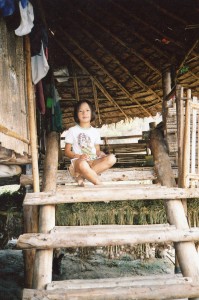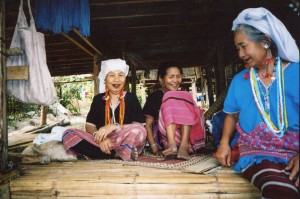Where did Angkor Wat come from? The first big state in Cambodia was the Funan. It thrived in southern Cambodia and Vietnam from about 1 CE to 600 CE. Many of Angkor’s roots grew there.
At least the Chinese saw the Funan as a state, but it might have been a network of smaller communities.
Being by the sea, the Funan prospered from maritime trade. It thrived in the emerging economic system that linked Rome, India and China in an unprecedented increase of prosperity and political organization. While Rome erected the great forums and the Coliseum, the Funan dug a network of canals to link its major towns.
In the first century CE, commerce between India and Southeast Asia increased, and Cambodians were exposed to increasing influences from India. A creative explosion soon occurred.
Chinese traders gave glimpses of Funan life. Much of their environment seems appealing. They lived in stilt homes by their extensive canal system. Some of their houses were carved. Bamboos and palm trees grew in abundance. Marshes full of rushes and reeds flourished beyond the villages. Homes must have looked like islands in a sea of green.
On drier land bananas, oranges and pomegranates grew. Scented woods like sandalwood also thrived. Since these people were downstream from the mighty Mekong River and Tonle Sap, they had plenty of fish.
Elephants lumbered, and people domesticated some as pack animals and used others for their tusks. Political rulers rode them for prestige.
And political rulers imported a huge amount of India’s religious symbolism to consolidate their states–this was the beginning of a 2,000 year exchange of ideas that included most of the carvings in Angkor Wat.
The Funan had many goods to trade with other lands, enough food, and lush vegetation. They made boats up to 90 feet long, with bows and sterns in the shape of a fish’s head and tail. Thailand’s famous royal barges follow this ancient art form.
But dangers lurked within this energetic growth. Crocodiles lived in the delta. Poisonous snakes slithered through the rushes and tigers roamed dry ground. The land must have also harbored its share of disease-carrying insects. The surrounding greenery and water gave life abundantly, and could suddenly take it. In this environment, a mixture of patterns emerged that the builders of Angkor Wat also lived in, and that has been common in Cambodia ever since.
1. The love of fun and living in the moment.
2. Fear of unseen powers in nature, and a lot of animistic beliefs.
3. Blends of local and Indian faiths.
4. The love of pageantry that elites put on to display themselves.
5. Sumptuous arts that come in endless varieties because they mix lots of local, Indian, Chinese and other Southeast Asian styles.
The Funan didn’t build any huge stone monuments, but it established a mixture of irreducible patterns that has made Cambodia a cultural feast.
You can see another key root of Angkor Wat at Roots of Angkor Wat, Part Two; Cambodian Origins in the Chenla Culture.
And you can go right to Angkor Wat at Ten Facts and Maybes about Angkor Wat.




Comments on this entry are closed.